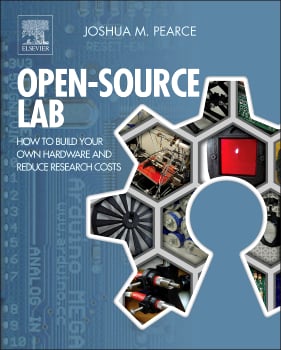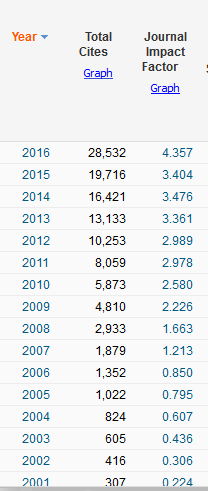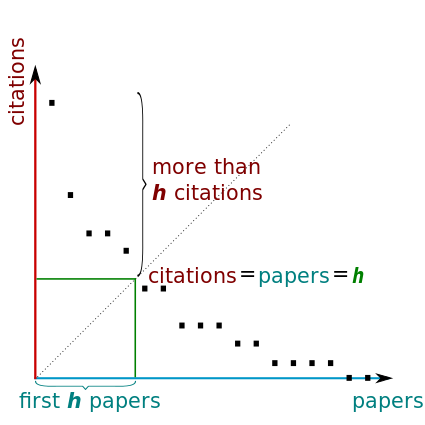ELEC-L3999: 3D Printing of Open Source Hardware for Science
- Period 1 Meetings: 2 times per week W/F 10-12 Sept. 11 to Oct. 27 Micronova Lecture Hall (Seminaaritila 2190)
- Staff: Dr. Joshua M. Pearce, visiting professor from Michigan Tech in the U.S. and Fulbright Aalto Distinguished Chair 2017-2018.
- Registration. Course registration is via Oodi as usual.
- Category:L3999 Fall2017
These two coupled courses on will run over Period 1 and Period 2.
Period 1: Introduction to 3-D printing of open source hardware for science.
Course Description
This course provides an introduction to the use of distributed digital manufacturing of open source hardware for scientific and engineering applications. Recent progress in this area has radically reduced the costs of scientific equipment, while enabling high-quality state-of-the-art customized experiments.
First this course will provide an overview of open-source hardware and technological development in theory and practice. Licensing issues will be explained. Both the use of free and open source design and manufacturing software and their user communities will be highlighted and demonstrated. Next, the course will detail the design, use and maintenance of the tools themselves and open-source electronics. In particular, the self-replicating rapid prototypers (RepRap) will be discussed in detail including: hardware, firmware, slicing and printer controller software for operating and maintaining the device. Finally the material properties, applications and ramifications of RepRap technology will be discussed along with the development of and other open hardware fabrication tools. Then, the technological evolution of the open-source digital manufacturing technology will be covered with a focus on developing innovation for improved performance and customization.
This will be a project-based course where students learn how to develop open hardware for their own experiments and assignments will develop students' skills through progressively more sophisticated design challenges. The final and most complicated challenge will be student-selected to assist their own research group and will make use of the Aalto FabLab to fabricate the device.
Credits: 5.0
Prerequisites. The course is meant for graduate students in science or engineering. While students in other areas with a strong interest in this topic are also welcomed they are expected to have a fundamental scientific understanding and be technically proficient.
Why Take This Course?
Why 3-D Printing? A recent report from data company Wanted Analytics found that in one month 35 percent of engineering job listings from a variety of fields, including biomedical, software, and transportation industries, required applicants familiar with 3-D printing.[1] Forbes explains why 3D printing is such a big deal. “50% of manufactured goods will be printed in 2060” according to ING
Why open source? You will make more money, because OS is more valuable. Recent analysis shows that jobs with the keywords "Microsoft Windows" have an average salary of $64,000, while jobs with the keyword "Linux" have an average salary of $99,000. [2]
Why open source hardware in science? Numerous studies have now shown that custom scientific hardware creates enormous value, enables more rapid development of science, better equipment and provides jaw-dropping ROIs for science funders.[3]
Required Course Material

Textbook: J.M. Pearce, The Open-Source Lab (Elsevier,2014). Direct link to Aalto reserve (or [4]),indirect Other reading will be handouts in class, on-line reading, and emailed pdfs. See hyperlinks below.
Free and open source software needed: OpenSCAD, FreeCAD, Blender, Lulzbot Edition Cura.
Laptop computer to be brought to class.
Other Useful Books
- Building Open Source Hardware: DIY Manufacturing for Hackers and Makers
- Practical Laboratory Automation: Made Easy with AutoIt
- Practical Arduino: Cool Projects for Open Source Hardware (Technology in Action)
Course Organization
This course will be run as an intense seminar meeting as a group. Students will be expected to read the course material before class and actively participate in discussions. The majority of class time will be spent on projects in a flipped class format. Each student will be responsible for designing and in the final project building open source scientific hardware. Students will be responsible for giving short presentations on their projects on each sub-topic in front of the class.
Learning Objectives
- Learn the fundamentals of additive manufacturing (AM) and 3-D printing with polymers, along with those for emerging materials (e.g., metals, ceramics, flexible materials, nanocomposites, biomaterials) and complex architectures.
- Learn the fundamentals of free and open source hardware (FOSH) design, licensing, and culture.
- Understand the maintenance, trouble shooting and operation of self-replicating rapid prototype (RepRap) 3-D printers.
- Understand operating principles, capabilities, and limitations of fused filament fabrication (FFF)-based 3-D printing.
- Understand the principles of "Design for 3-D printing" and compare and contrast additive processes with conventional manufacturing in terms of rate, quality, cost, environmental impact, social control and flexibility.
- Gain hands-on experience with RepRap 3-D printers; use these machines to fabricate example parts of increasing complexity, post-process the parts, and study the results.
- Become familiar with the complete workflow of open source AM, including computational design tools, firmware, software, file formats, toolpath generation, and characterization.
- Understand how to make a new part and alter an existing part for RepRap 3-D printing for custom applications.
- Study applications of distributed manufacturing using 3-D printing specifically scientific equipment
- Understand the requirements to design open source scientific hardware
- Understand documentation necessary to publish in the field of open source scientific hardware
- Place open source 3-D printing in the context of the evolving distributed manufacturing infrastructure.
Grading
Grading: Grades will be based on 5 projects of increasing complexity.
- OpenSCAD Crystal Structure Project 15%
- Tool Customization 15%
- L3999 Final project
- Novel Design: CAD 20%
- Novel Design: Presentation 10%
- Novel Design: Documentation 40%
Late Assignments
Deduct 10% per day, up to 5 working days, then 0 grade. Only exception is for documented illness. Missed projects are penalized by the negative square of the percent total.
Course Policies
Appropriate behavior, attendance, participation and collaboration with your peers on group assignments is expected. Collaboration/Plagiarism Rules Collaboration is encouraged on the group project but the individual projects must be completed alone. Follow all Aalto University rules.
Course Schedule
Evaluation week for Period IV
Mon 19 Feb - Fri 6 Apr 2018
Tue 3 Apr - Fri 6 Apr 2018
Period V
Evaluation week for Period V
Mon 9 Apr - Fri 25 May 2018
Mon 21 May - Fri 25 May 2018
OSL= Open-Source Lab textbook
| Class | Date | Topic | To Do |
|---|---|---|---|
| 1 | 9-20 | Introduction to course, course organization, Open licensing - Advanced Sharing | OSL Chap 1,2, final project assigned |
| 2 | 9-22 | OS Legal questions, Wiki tutorial | Bring Laptop, OSL Chap 3 |
| 3 | 9-27 | OpenSCAD tutorial:Media:3 Intro to OpenSCAD 2017 science.pdf | OpenSCAD project assigned |
| 4 | 9-29 | RepRap for Science: How to Use, Design, and Troubleshoot the Self-Replicating 3-D Printer:Media:4 intro to reprap.pdf | OSL Chap 5, Reprap.org |
| 5 | 10-4 | OS Microcontrollers for Science: How to Use, Design, and Troubleshoot the Self-Replicating 3-D Printer | OSL Chap 4, OpenSCAD project due, Customization project assigned. stl to scad |
| 6 | 10-6 | Online class only: Videos for FreeCAD and Blender Tutorials | Bram de Vries FreeCAD video tutorials (starting with 1 of 8), Using OpenSCAD tricks in FreeCAD, Using Blender to Model for 3-D printing, 2D to 3D in Blender, Creating 3D models for printing with Blender: Advanced tips |
| 7 | 10-11 | Digital Designs and Scientific Hardware I | OSL 6, L3999 Final project assigned |
| 8 | 10-13 | Digital Designs and Scientific Hardware II | work on identifying final project, examples |
| 9 | 10-18 | Quantifying the Value of Open Source Hardware | OSL 7, Customization due |
| 10 | 10-20 | Presentations | Presentations due |
| 10-27 | Novel Design files due posted and Appropedia page edited | Final project due |
Core Making Resources at Aalto U
- Aalto FabLab - core course partner 7 Lulzbots for class use - plus many other 3DPs and resources
- Aalto Design Factory - many resources, custom 3DP specialty in ABS, machining, pcb, and silicone, etc.
- A Space - Primarily design, textiles, but some 3DPs, training and cost of consumables to use
- ADD Lab - Advanced AM
Additional Readings and Media
Module 1: Introduction to OSH
- OSL Chap. 2 OSH Introduction, Cathedral and Bazaar, Microsoft OSH, OSH intro video, TEDxBoulder - Nathan Seidle (Sparfun)- How Open Hardware will Take Over the World, Lulzbot factory tour and discussion of OSH business by Jeff Moe, The Law of Accelerating Returns by Ray Kurzweil, Do Makers Propose a More Open Source Future? - Idea Channel, PBS Digital Studios, 2015 the Year OSS went nuclear, Can Open-Sourcing Transform Electronics Hardware?
- OSL Chap. 3 OS License OS License, Creative Commons copyright licenses, OS software for GNU-Linux, The Future of 3D Printing: Smarter IP Strategies, Less Lawsuits
Module 2: Open source CAD
- OpenSCAD, OpenSCAD manual, OpenSCAD for 3D Printing Kindle Edition, MOST SCAD Libraries on Github, Object oriented OpenSCAD, RapCAD, Aaltoblock
- FreeCAD, Bram de Vries FreeCAD video tutorials (starting with 1 of 8)Using OpenSCAD tricks in FreeCAD
- Blender, Using Blender to Model for 3-D printing, 2D to 3D in Blender, Creating 3D models for printing with Blender: Advanced tips
- Tricks - Multicolor, A few ways to strengthen 3D printed parts, 3D print from McMaster-Carr, 3DHubs - how to optimize design for FFF
- Converting 2D images to 3D for printing using open source software, Images to OpenSCAD Via Inkscape, Celtic Knot SCAD, Bezier curves and knots script for Blender
- Open Source Photogrammetry, Open source 3D scanners
Module 3: RepRap
RepRap
- OSL Chap. 5
- Watch RepRap video, The RepRap project- Ranellucci
RepRap build OSL Chap. 5,Delta Build Overview:MOST, Athena Build Overview, Need help go here https://groups.google.com/a/mtu.edu/forum/?hl=en#!forum/most-delta-users-l then use email: most-delta-users-l@mtu.edu- MOST Delta mods - see also: Github MTU-MOST repositories, Open-source syringe pump, Open-source metal 3-D printer, MOST mods (incomplete but getting there), another approach to PCB design
- Mech strength: Mechanical Properties of Components Fabricated with Open-Source 3-D Printers Under Realistic Environmental Conditions, The Effects of PLA Color on Material Properties of 3-D Printed Components, preprint for all materials
Lulzbot
Software toolchain
- Software - Slicers RepRap Magazine 1, Slic3r, Cura,RepRapPro Slicer, tweak AtoZ Cura plugin, Matter Control
- Printer controllers - Printrun, Franklin -- How to Install Franklin on your 777 printer, Franklin use video, Using Franklin (long), Hacking Franklin
- OSL Chap. 4 OS microcontrollers Arduino Tutorials , ardublock Makershed comparison, Jeremy Blum TED talk, Nathan Seidle- SparkFun
Module 2: OS Community
- RepRap IRC, RepRap Forums, RepRap Groups
- Arduino Forum, Arduino google group
- Free and open repositories of designs, http://www.yeggi.com/ http://www.stlfinder.com/
- Tricks: support, raft, parts, orientation, fill, slicer choice, pictorial guide to problems,pictorial guide to reprap print trouble shooting, calibration photos, RichRap Slic3r is Nicer, living hinges, post processing
- Appropedia, 777 demo page
Module 5: OS Science
- OSL Chap. 1 examples 3D printable science equipment
- OSL Chap. 6
- OSL Chap. 7
- Policy: Quantifying value of FOSH, ROI, Science for All: How to Make Free, Open Source Laboratory Hardware, Scientific American, National Academy of Engineering Special Issue on Open Source Hardware
Other
- Post processing https://www.3dhubs.com/knowledge-base/post-processing-fdm-printed-parts
- Recyclebot, Open Source Ecology TED talk
- The Economist-- A third industrial revolution, Where we go from here - types of OS3DP Open-source metal 3-D printer
- First International Workshop on "Low-cost 3D Printing for Science, Education and Sustainable Development, 25. Hopes and Fears, 27. Open Hardware and Arduino, 31. Prehistoric Collections: Digitizing the Leaky collection and interesting perspectives on digital rights and proprietary museum collections, 33. Bringing a CAD model into a physical object: Ranelucci video, 54. The future of 3D printing: Another Ranelucci video.
Period 2: Advanced 3-D printing of open source hardware for science
Period 2: Advanced 3-D printing of open source hardware for science (By Invitation Only)
The best student projects from period 1 will be selected to be further refined in period 2 of the course. This will focus on documentation, design optimization, validation, technical specification evaluation, economic analysis and writing for the peer-reviewed literature. The course outcome will be a peer-reviewed publication submitted to a journal such as HardwareX, a new journal from Elsevier, to encourage open design of scientific hardware.
Prerequisites: ELEC-L3999 Period 1 and invitation from instructor.
Credits: 5.0
Period 2 Meetings: 1 time per week: W 10-12, Oct. 30- Dec. 15.
Staff: Dr. Joshua M. Pearce, visiting professor from Michigan Tech in the U.S. and Fulbright Aalto Distinguished Chair 2017-2018.
Registration. Course registration is via Oodi as usual.
Grading: Grades will be based on preparation of an open source hardware article for peer review.
Schedule
email to joshua.pearce@aalto.fi
- 11.1 Importance of publishing, Introduction to algorithm: MOST paper writing, Lit. Review, Zotero
- 11.8 OS Research, Journals selection, Impact factor, h-index
- 11.15 Methods and HardwareX template Lit review due
- 11.22 Results/Figures, How to make a figure to publish,Review Process, Outline, Reviewers, Journal Selection due
- 11.29 Discussion, Future work and Conclusions, Penultimate design/experiments due
- 12.6 Draft 1 Due No class.
- 12.13 Presentations
- 12.15 Final Project Full Documentation due midnight
Potential Target Journals
Core open hardware for science journals
Traditional
- PloS One IF=2.806
- The Journal of Laboratory Automation (JALA) is now SLAS Technology
- Instruements and Experimental Techniques, IF 0.437
- IEEE Transactions on Automation Science and Engineering
- Review of Scientific Instruments
- Measurement Science and Technology
- Speciality journals in your field
Pure OA journals
- Designs
- Instruments
- Inventions (also special CFP for 3DP Nov 30th deadline http://www.mdpi.com/journal/inventions/special_issues/3D_Printing )
- Technologies
3D printing specific journals
- The International Journal of Advanced Manufacturing Technology (JIF=1.205) http://link.springer.com/article/10.1007%2Fs00170-012-4605-2
- Rapid Prototyping Journal.The international journal for research on additive manufacturing and 3D printing. http://web.archive.org/web/20131225171042/http://www.emeraldinsight.com/products/journals/journals.htm?id=rpj (JIF=1.02)
- 3D Printing and Additive Manufacturing journal (Mary Ann Liebert, Inc., publishers) http://www.liebertpub.com/ new
- Journal of Manufacturing Technology Management. http://web.archive.org/web/20140525064253/http://www.emeraldinsight.com:80/journals.htm?articleid=1810508
- Additive Manufacturing - Elsevier new, numbered refs
- 3D printed materials and systems - Springer new, fully open access
- Progress in Additive Manufacturing - Springer, new open access APC numbered
- International Journal of Precision Engineering and Manufacturing Springer, IF 1.0, pay $315, 6 pages, template, numbered
- International Journal on Additive Manufacturing Technologies -- new -- not accepting papers yet Publisher – Additive Manufacturing Society of India (AMSI)
Protocol Journals may have interest
- Nature Protocols IF=10
- MethodsX
Impact Factor

The impact factor (IF) of an academic journal is a measure reflecting the yearly average number of citations to recent articles published in that journal. It is frequently used as a proxy for the relative importance of a journal within its field. In any given year, the impact factor of a journal is the number of citations, received in that year, of articles published in that journal during the two preceding years, divided by the total number of articles published in that journal during the two preceding years. So are articles in that journal getting cited fast after publication. * Because citation counts have highly skewed distributions, the mean number of citations is potentially misleading if used to gauge the typical impact of articles in the journal rather than the overall impact of the journal itself. For example, about 90% of Nature's 2004 impact factor was based on only a quarter of its publications, and thus the actual number of citations for a single article in the journal is in most cases much lower than the mean number of citations across articles.
- The strength of the relationship between impact factors of journals and the citation rates of the papers therein has been steadily decreasing since articles began to be available digitally. [5]
- Open access improves citation rates. [6], Princeton
Lists:
- http://www.scimagojr.com/journalrank.php
- http://www.scijournal.org/
- https://jcr.incites.thomsonreuters.com/JCRJournalHomeAction.action?
Top journals in the 20+ (Nature and Science ~40), solid highly selective journals in teens- high single digits (Proceedings NAS is 9), specialty journals >1 (e.g. APL 3.4), new or unknown journals <1.
There is a big change with time based on popularity of the subject.
h-index

The definition of the index is that a scholar with an index of h has published h papers each of which has been cited in other papers at least h times. Thus, the h-index reflects both the number of publications and the number of citations per publication. The index is designed to improve upon simpler measures such as the total number of citations or publications. The index works properly only for comparing scientists working in the same field; citation conventions differ widely among different fields.
Input data comes from subscription-based databases such as Scopus and the Web of Knowledge provide automated calculators. Harzing's Publish or Perish program calculates the h-index based on Google Scholar entries.
Strongly recommend claim your profiles on all 3 websites and manage them as well as set up accounts on the following: For helping ensure authorship
For spreading your work open access
For networking and jobs
You can also somewhat predict your future hindex. The variables you have control over are variables are number of articles, number of distinct journals and number of articles in top journals.
To compare to older colleagues: The m-index is defined as h/n, where n is the number of years since the first published paper of the scientist; also called m-quotient. You can also subtract the difference in your starting years from their Google Scholar profile.